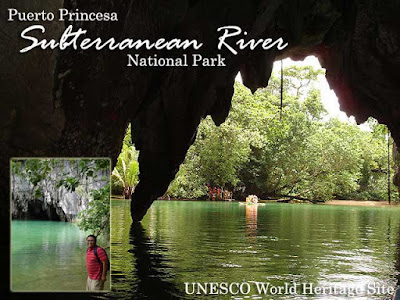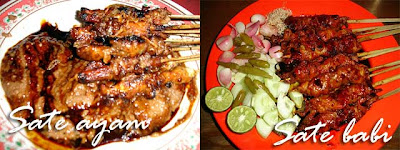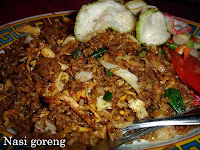 It’s been quite a while since the Philippines has had a new UNESCO World Heritage Site. The latest was still way back in 1999, with the inscription of two sites, Vigan and the Puerto Princesa Subterranean River National Park known as the Underground River.
It’s been quite a while since the Philippines has had a new UNESCO World Heritage Site. The latest was still way back in 1999, with the inscription of two sites, Vigan and the Puerto Princesa Subterranean River National Park known as the Underground River. Batanes has tried several times to get in the list but never seems to make it because of human error I was told. Besides, some experts say Batanes is not ready for inscription. Aside from being culturally significant and well-preserved, the host community has to be ready for it. That means that the ordinary man on the street should know about the UNESCO inscription, how it will affect them, as well as the duties and responsibilities that accompany such an inscription. The Underground River is a prime example of how a local government, with the right political will and proper guidance from experts, can push proper conservation policies that could lead to inscription.
Batanes has tried several times to get in the list but never seems to make it because of human error I was told. Besides, some experts say Batanes is not ready for inscription. Aside from being culturally significant and well-preserved, the host community has to be ready for it. That means that the ordinary man on the street should know about the UNESCO inscription, how it will affect them, as well as the duties and responsibilities that accompany such an inscription. The Underground River is a prime example of how a local government, with the right political will and proper guidance from experts, can push proper conservation policies that could lead to inscription. The park is the only one that is managed by a local government unit in fact. It was under the care of the Department of Environment and Natural Resources (DENR) before. But illegal logging was rampant. Newly-elected Puerto Princesa mayor, Edward Hagedorn brought then DENR Secretary Angel Alcala to the park to show him the illegal logging activities of the DENR personnel. This resulted in a memorandum that turned the whole area over to the city government.
The park is the only one that is managed by a local government unit in fact. It was under the care of the Department of Environment and Natural Resources (DENR) before. But illegal logging was rampant. Newly-elected Puerto Princesa mayor, Edward Hagedorn brought then DENR Secretary Angel Alcala to the park to show him the illegal logging activities of the DENR personnel. This resulted in a memorandum that turned the whole area over to the city government. Lucky day 07-07-07 was spent at the Underground River today via another group tour I booked from my hotel. According to UNESCO, “The Puerto Princesa Subterranean River National Park features a spectacular limestone karst landscape with its underground river. A distinguishing feature of the river is that it flows directly into the sea, and the lower portion of the river is subject to tidal influences. The area also represents a significant habitat for biodiversity conservation. The site contains a full mountain to the sea ecosystem and protects forests, which are among the most significant in Asia.” This was the reason justification for its inscription in the prestigious list.
Lucky day 07-07-07 was spent at the Underground River today via another group tour I booked from my hotel. According to UNESCO, “The Puerto Princesa Subterranean River National Park features a spectacular limestone karst landscape with its underground river. A distinguishing feature of the river is that it flows directly into the sea, and the lower portion of the river is subject to tidal influences. The area also represents a significant habitat for biodiversity conservation. The site contains a full mountain to the sea ecosystem and protects forests, which are among the most significant in Asia.” This was the reason justification for its inscription in the prestigious list.The ride to Sabang Beach, the jump-off point for the Underground River, is about two hours from the city center, with two stopovers: one as you leave the National Highway, and another at the Buenavista View Deck where you could savor a panoramic view of Ulugan Bay.
 At Sabang Beach, you had to visit the park office to get a permit to visit the Underground River and book your boat to the river entrance. You could also opt to hike 2.1 kilometers up and down a mountain trail from Sabang to the river entrance. The group tours are really convenient since they took care of all the logistics. The PHP1300 I paid includes hotel pick-up, land travel to and from Sabang Beach, boat transfers from Sabang to the river entrance, all entrance fees, and lunch.
At Sabang Beach, you had to visit the park office to get a permit to visit the Underground River and book your boat to the river entrance. You could also opt to hike 2.1 kilometers up and down a mountain trail from Sabang to the river entrance. The group tours are really convenient since they took care of all the logistics. The PHP1300 I paid includes hotel pick-up, land travel to and from Sabang Beach, boat transfers from Sabang to the river entrance, all entrance fees, and lunch.On the boat on the way to the river entrance, we were afforded stunning views of the limestone karst landscape that characterizes the park. The boat passed by a beach which I remember from my trip in 1997. Swimming is not allowed in the river entrance area which is why you had to hike up and down the Monkey Trail to get to that beach to swim.
 At the river entrance, you had to sign their register, wear life jackets and protective helmets, and wait in line to board small boats with outriggers that would take you into the cave. Each boat had a battery-powered lamp in front which I would later find out while exploring the area, were charged with solar energy. Our boat guide was Toting, who is the most popular of the guides for his humor. In fact, he is sought after by visitors and is the one who appears when the Underground River is featured on television.
At the river entrance, you had to sign their register, wear life jackets and protective helmets, and wait in line to board small boats with outriggers that would take you into the cave. Each boat had a battery-powered lamp in front which I would later find out while exploring the area, were charged with solar energy. Our boat guide was Toting, who is the most popular of the guides for his humor. In fact, he is sought after by visitors and is the one who appears when the Underground River is featured on television. Indeed, he was hilarious, cracking jokes every now and then, breaking the silence inside the cave. It was a different world we entered, one covered in complete darkness, pierced by the solitary spotlight we had on board. Looking up, you would see different species of bats hanging from the ceiling, fast asleep. Their presence was obvious due to the pungent odor of guano, or bat dung, close to the mouth of the cave.
Indeed, he was hilarious, cracking jokes every now and then, breaking the silence inside the cave. It was a different world we entered, one covered in complete darkness, pierced by the solitary spotlight we had on board. Looking up, you would see different species of bats hanging from the ceiling, fast asleep. Their presence was obvious due to the pungent odor of guano, or bat dung, close to the mouth of the cave. Flying around were cave swiflets (not bats as others mistake them for) that are most known for the nests they create from their saliva that become the main ingredient of nido soup. The formations inside the cave are spectacular. The speleothems (the cave formations or secondary mineral deposits) formed by thousands of years of mineral accumulation, were very interesting.
Flying around were cave swiflets (not bats as others mistake them for) that are most known for the nests they create from their saliva that become the main ingredient of nido soup. The formations inside the cave are spectacular. The speleothems (the cave formations or secondary mineral deposits) formed by thousands of years of mineral accumulation, were very interesting. The Underground River in Puerto Princesa is the longest explored underground river in the world. A total of 8.2 kilometers have been discovered; 4.3 kilometers are navigable; but access to tourists is limited to 1.5 kilometers. You’ll have to get a special permit to explore the rest of the river.
The Underground River in Puerto Princesa is the longest explored underground river in the world. A total of 8.2 kilometers have been discovered; 4.3 kilometers are navigable; but access to tourists is limited to 1.5 kilometers. You’ll have to get a special permit to explore the rest of the river. Anyway, the tour inside the cave lasted about 45 minutes. In the picnic area, lunch was served by the guides. Just a warning though, watch out for the long-tailed macaque monkeys. If you let down your guard even just for a while, you might lose your lunch to them. Monitor lizards or bayawak also walk freely in the area.
Anyway, the tour inside the cave lasted about 45 minutes. In the picnic area, lunch was served by the guides. Just a warning though, watch out for the long-tailed macaque monkeys. If you let down your guard even just for a while, you might lose your lunch to them. Monitor lizards or bayawak also walk freely in the area. After lunch, our group made its way back to Sabang Beach, and then the city center. But we made a brief stopover at Viet Ville to have more Vietnamese food. This time, I ordered chicken salad and beef ball soup.
After lunch, our group made its way back to Sabang Beach, and then the city center. But we made a brief stopover at Viet Ville to have more Vietnamese food. This time, I ordered chicken salad and beef ball soup. Back in the city proper, I took a quick nap before heading to Balinsasayaw Restaurant where our group decided to have dinner. It was a full menu of nido soup, grilled meat and sea foods, and garlic crabs for us. Thanks to Oliver Banzon, Em’s friend, for treating us to a sumptuous dinner. The night wasn’t over since Rolly and Gigi Padilla treated us to drinks at Itoy’s Coffee just across the street. It was our last night and I was taking the Cebu Pacific flight back to Manila the next day. Although Rolly and Gigi were still staying another day for a Dos Palmas tour which completes any Puerto Princesa holiday. More photos in Multiply.
Back in the city proper, I took a quick nap before heading to Balinsasayaw Restaurant where our group decided to have dinner. It was a full menu of nido soup, grilled meat and sea foods, and garlic crabs for us. Thanks to Oliver Banzon, Em’s friend, for treating us to a sumptuous dinner. The night wasn’t over since Rolly and Gigi Padilla treated us to drinks at Itoy’s Coffee just across the street. It was our last night and I was taking the Cebu Pacific flight back to Manila the next day. Although Rolly and Gigi were still staying another day for a Dos Palmas tour which completes any Puerto Princesa holiday. More photos in Multiply.






























